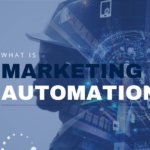Artificial Intelligence (AI) has emerged as a game-changer, offering unprecedented opportunities for businesses to refine their marketing strategies and achieve more impactful results.
AI in marketing analytics is transforming how businesses understand and interact with their audiences. By making the most out of it, you can automate tasks, personalize customer experiences, and optimize campaigns with remarkable precision.
Traditional marketing analytics often involve complex data sets that can be overwhelming and difficult to interpret. AI revolutionizes this process by applying algorithms to analyze large volumes of data swiftly and accurately. This transformation allows you to uncover patterns, predict trends, and measure performance in ways that were previously impossible, leading to more strategic and data-driven decisions.
This guide will explore how AI tools can elevate your marketing efforts, turning data into actionable insights and enhancing decision-making processes.
Understanding AI in Marketing Analytics
AI in marketing analytics refers to the use of advanced algorithms and machine learning techniques to process, analyze, and interpret large volumes of marketing data. AI enables you to extract actionable insights from complex data sets, automate repetitive tasks, and predict future trends with high accuracy.
The scope of AI in marketing analytics extends across various functions, including customer segmentation, campaign optimization, content personalization, and performance measurement. By applying AI, you can gain a deeper understanding of customer behaviors, preferences, and trends, allowing for more targeted and effective marketing strategies.
Here are some key components and technologies involved in the use of AI in marketing analytics:
- Machine Learning (ML): ML models can analyze past customer interactions and predict future behaviors, helping you anticipate trends and optimize your strategies accordingly.
- Natural Language Processing (NLP): In marketing analytics, NLP is used to analyze customer feedback, social media conversations, and other text-based data to gauge sentiment, identify emerging topics, and refine messaging strategies.
- Predictive Analytics: Predictive analytics uses historical data and statistical algorithms to forecast future outcomes. By leveraging predictive models, you can determine customer needs, optimize campaign timing, and enhance targeting efforts.
- Data Mining: AI-powered data mining tools help you identify valuable insights that might not be immediately apparent, enabling more informed decision-making.
- Automation Tools: AI-driven automation tools streamline repetitive tasks such as lead scoring, email marketing, and social media management. By automating these processes, you can focus on strategic initiatives and improve overall efficiency.
- Visual Analytics: Visual analytics tools leverage AI to transform complex data into intuitive visual representations. Dashboards, charts, and graphs help you quickly interpret data, identify trends, and communicate insights effectively.
Enhancing Customer Segmentation with AI
Customer segmentation is a fundamental aspect of effective marketing, enabling you to tailor your strategies to different groups within your audience. AI in marketing analytics has revolutionized this process by offering more precise and dynamic ways to understand and engage different customer segments. Here’s how AI enhances customer segmentation, making it more actionable and effective:
- Transforming Data into Actionable Segments
AI excels at processing and analyzing vast amounts of data to identify meaningful patterns and insights. By integrating AI into customer segmentation, you can transform raw data into actionable segments with greater accuracy. AI algorithms sift through diverse data sources to create detailed and nuanced customer profiles, such as:
- Purchase history
- Browsing behavior
- Social media activity
- Demographic information
These profiles allow you to segment your audience not just by basic criteria but by complex behaviors and preferences, leading to more tailored and effective marketing strategies.
- Identifying Customer Behaviors for Better Targeting
One of AI’s most powerful capabilities is its ability to analyze and predict customer behaviors. Machine learning models can identify intricate patterns in how customers interact with products or services, detect emerging trends, and forecast future behaviors. For example, AI can analyze purchasing patterns to determine which customers are likely to respond to specific types of offers or content.
- Integration with Campaign Management Tools
AI-enhanced customer segmentation seamlessly integrates with campaign management tools, amplifying their effectiveness. By linking AI-driven insights with these tools, you can automate and optimize campaign execution. For instance, AI can help in dynamically adjusting ad spend based on segment performance, personalizing email content for different segments, and scheduling social media posts for optimal engagement.
Natural Language Processing for Sentiment Analysis
Natural Language Processing (NLP) is revolutionizing how businesses understand and respond to customer sentiment. By analyzing text data from various sources, NLP tools can provide valuable insights into public perception and customer experiences. Here’s a deeper look at how NLP enhances sentiment analysis and its application across different platforms:
- Processing Social Media, Customer Reviews, and Forums
Social Media, Customer Reviews, and Forums are rich sources of customer opinions and feedback. NLP techniques enable businesses to process and analyze these diverse textual data streams to gauge sentiment. On social media, NLP can monitor mentions, hashtags, and conversations to track brand sentiment in real-time. For customer reviews, NLP tools can categorize feedback into positive, negative, or neutral sentiment, providing insights into product or service performance. Forums and discussion boards offer in-depth customer insights, which NLP can analyze to uncover nuanced opinions and emerging trends.
- Tools and Techniques for Effective Sentiment Analysis
Several tools and techniques are essential for effective sentiment analysis using NLP, such as:
- Machine Learning Models: Supervised learning models can be trained on labeled datasets to classify sentiment. More advanced models leverage techniques such as Recurrent Neural Networks (RNNs) and transformers to capture context and nuances in text.
- Text Preprocessing: Techniques such as tokenization, stemming, and lemmatization are used to prepare text data for analysis. Removing stop words and normalizing text helps improve the accuracy of sentiment classification.
- Aspect-Based Sentiment Analysis: This technique breaks down sentiment analysis by specific aspects or features of a product or service. For example, it can differentiate between sentiment about product quality versus customer service, providing more granular insights.
- Addressing Complex Expressions and Cultural Differences
Complex expressions and cultural differences pose significant challenges for sentiment analysis. NLP tools must be equipped to handle:
- Sarcasm and Irony: Sarcastic or ironic statements can skew sentiment analysis results. Advanced NLP models use contextual understanding to detect these nuances, but it remains a challenging area.
- Ambiguity and Polysemy: Words with multiple meanings or ambiguous contexts can lead to inaccurate sentiment classification.
- Cultural Differences: Sentiment can vary significantly across different cultures and languages. NLP tools need to be adapted for local language nuances, idiomatic expressions, and cultural context.
AI in Visual Content Analysis
AI is transforming visual content analysis by providing sophisticated tools to understand and interpret images and videos. Here’s a closer look at how AI enhances visual content analysis:
- Automating Brand Element Detection
Automating brand element detection involves using AI to identify and analyze key visual elements related to a brand, such as logos, colors, and product placements. AI-powered image recognition algorithms can quickly and accurately detect brand elements across various visual content, including advertisements, social media posts, and user-generated content. This automation simplifies tasks like brand monitoring, competitive analysis, and content curation.
- Real-time Analysis of Images and Videos
Real-time analysis of images and videos is another powerful application of AI in visual content analysis. AI tools can process and analyze visual content instantaneously, providing immediate insights and enabling quick decision-making. This capability includes content moderation, performance tracking, and live event monitoring.
- Ensuring Consistency and Compliance
Ensuring consistency and compliance in visual content is crucial for maintaining brand integrity and adhering to regulatory standards. AI tools play a key role in brand consistency, regulatory compliance, and quality control.
Optimizing Marketing Campaigns with AI
AI is revolutionizing the way marketing campaigns are optimized, providing powerful tools to enhance strategy, streamline processes, and deliver impactful results. Here’s how AI can transform your approach to campaign optimization:
- Analyzing Past Performance for Better Strategies
Analyzing past performance is crucial for refining marketing strategies and improving future campaigns. AI excels at processing and interpreting historical data to uncover insights that drive better decision-making. Key aspects include trend identification, customer insights, and performance metrics.
- Automating A/B Testing for Campaign Improvements
Automating A/B testing is a powerful way to refine marketing campaigns through systematic experimentation. AI can streamline and enhance this process in several ways, such as:
- Dynamic Experimentation: Automates the creation and management of A/B tests by generating multiple variations of campaign elements, such as headlines, visuals, and calls to action.
- Real-Time Optimization: Monitors the performance of different variants in real-time, adjusting and optimizing elements based on live data.
- Advanced Analytics: Provides in-depth analysis of test results, identifying the factors that contribute to better performance.
- Utilizing AI for Real-Time Insights
Utilizing AI for real-time insights is essential for adapting marketing strategies on the fly and responding to emerging trends. AI technologies enable real-time data processing and analysis, offering several benefits, including:
- Immediate Feedback: Provides instant feedback on campaign performance, allowing you to quickly identify successful elements and areas needing adjustment.
- Trend Detection: Can detect real-time trends and shifts in consumer behavior, such as emerging topics on social media or sudden changes in purchasing patterns.
- Predictive Analytics: Predicts future performance based on current data, helping you anticipate outcomes and make proactive adjustments.
If you wish to transform your marketing campaigns with AI and unlock unparalleled potential, let Maino.ai guide you through the process of optimizing every aspect of your strategy, from analyzing past performance to automating A/B testing and leveraging real-time insights. Get started today and experience the future of campaign optimization.
Leveraging Predictive Analytics
Here’s how predictive analytics can be a game-changer:
- Forecasting Behavioral Trends
Forecasting behavioral trends involves using predictive models to understand and determine future customer behaviors and market trends. Key aspects include trend prediction, Customer Lifetime Value (CLV), and demand forecasting.
- Reducing Risks through Advanced Algorithms
Reducing risks through advanced algorithms involves applying predictive analytics to minimize uncertainties and manage potential risks. Key approaches include risk assessment, fraud detection, and churn prediction.
- Making Data-Driven Decisions
Making data-driven decisions is about leveraging predictive insights to guide strategic planning and operational choices. Key benefits include:
- Informed Strategy Development: Provides actionable insights into market conditions, customer behavior, and future trends.
- Resource Allocation: By predicting future needs and trends, you can allocate resources more effectively, such as optimizing marketing budgets, adjusting staffing levels, or investing in new technologies.
- Performance Optimization: Predictive analytics helps in evaluating the potential impact of different business decisions. For example, it can forecast the outcomes of various marketing campaigns or product launches, allowing you to choose the most promising options.
Challenges in Implementing AI in Marketing Analytics
Integrating AI into marketing analytics presents numerous opportunities, but it also comes with several challenges. Here are some of them:
- Ensuring High-Quality Data
Ensuring high-quality data is crucial for the success of AI-driven marketing analytics. The effectiveness of AI models heavily depends on the quality of the data they are trained on. Inaccurate or incomplete data can lead to misleading insights and poor decision-making. Businesses need robust processes for data validation and cleansing to ensure accuracy.
- Addressing Privacy Concerns
Addressing privacy concerns is a significant challenge when implementing AI in marketing analytics. With increasing scrutiny on data privacy regulations and consumer expectations, adhering to regulations such as the General Data Protection Regulation (GDPR) and the California Consumer Privacy Act (CCPA) is critical. These laws govern how data is collected, stored, and used, and non-compliance can result in significant fines.
- Overcoming Skepticism around AI
Overcoming skepticism around AI involves addressing concerns and misconceptions about AI’s capabilities and limitations. Many stakeholders may be skeptical of AI due to its “black-box” nature. Providing clear explanations of how AI models work and how decisions are made can help build trust and acceptance.
- Navigating Skills and Expertise Requirements
Finding and hiring skilled professionals with expertise in AI, machine learning, and data analytics can be challenging. There is a high demand for these skills, and qualified candidates may be scarce. Existing team members may need upskilling to effectively use AI tools and interpret results. Investing in training and development programs is crucial for building internal expertise.
Best Practices for AI Implementation
Successfully implementing AI in marketing analytics requires careful planning and execution. Adopting these best practices can help you navigate the complexities of AI integration and maximize its benefits.
- Developing a Clear AI Strategy
Developing a clear AI strategy is crucial for guiding the successful adoption and deployment of AI technologies. Clearly outline the specific goals and outcomes you aim to achieve with AI. Whether it’s improving customer segmentation, optimizing ad spend, or enhancing predictive analytics, having well-defined objectives ensures that AI efforts are aligned with business goals.
- Building a Strong Data Infrastructure
Building a strong data infrastructure is essential for supporting AI initiatives and ensuring high-quality results. Implement systems and processes for collecting comprehensive and accurate data from various sources. Ensure that data is relevant to the AI models and the objectives of your marketing campaigns.
- Hiring Skilled Professionals
Hiring skilled professionals is vital for the successful implementation and management of AI technologies. Seek professionals with expertise in AI, machine learning, and data science. Skills in programming languages (e.g., Python, R), machine learning frameworks, and statistical analysis are crucial.
- Ensuring Compliance with Data Privacy Regulations
Ensuring compliance with data privacy regulations is essential for building trust and avoiding legal issues. Familiarize yourself with relevant data privacy regulations, such as GDPR, CCPA, and others applicable to your region. Understand the requirements related to data collection, processing, and storage. Develop and enforce comprehensive privacy policies that outline how customer data is collected, used, and protected. Ensure transparency and obtain the necessary consent from customers.
Future Trends in AI-Enhanced Marketing Analytics
As AI technology continues to evolve, it is reshaping the landscape of marketing analytics with increasingly advanced tools and capabilities. Here’s a look at the future trends in AI-enhanced marketing analytics:
- AI-Powered Real-Time Analytics
AI-powered real-time analytics is set to revolutionize how businesses respond to data. AI will enable even faster processing of data streams, providing real-time insights into customer behavior, campaign performance, and market trends. This immediacy allows you to make timely adjustments and optimize strategies on the fly.
- Advanced-Data Processing and Recognition
Advanced data processing and recognition will drive a deeper and more accurate understanding of complex data types. AI will increasingly handle and integrate multimodal data, such as combining text, images, and video, for a more comprehensive analysis. This will provide a richer understanding of customer interactions and preferences.
- Enhancing Customer Journey Analytics
Enhancing customer journey analytics with AI will provide a more detailed and actionable view of the customer experience. AI will enable predictive journey mapping, which determines customer needs and behaviors based on historical data. This allows for more proactive and personalized engagement strategies.
- Future Prospects in AI Development
Future prospects in AI development will drive the next wave of innovation in marketing analytics. The development of explainable AI will make it easier for you to understand and interpret AI-driven insights and recommendations. This transparency will build trust and facilitate better decision-making.
Conclusion
As the landscape of marketing analytics continues to evolve, the integration of Artificial Intelligence (AI) stands out as a transformative force. The ability to use AI for real-time analytics, advanced data processing, and enhancing customer journey insights offers unprecedented opportunities for businesses to refine their strategies and drive growth.
If you wish to adopt best practices and effectively leverage AI to gain a competitive edge, get in touch with Maino.ai. They leverage future trends in AI and embrace innovations to enhance your marketing capabilities while enabling you more personalized, data-driven decision-making that resonates with today’s dynamic consumer expectations.
As technology continues to advance, those who use the capabilities of AI will be well-positioned to lead in an increasingly competitive marketplace, delivering exceptional value to their customers and driving their businesses forward. So, get in touch with Maino.ai today!













